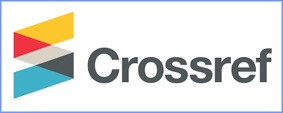Perubahan Fonologis Bahasa Gaul dalam Percakapan Whatsapp Kelompok Siswa Kelas 9 MTs Muhammadiyah 05 Kemusu
DOI:
https://doi.org/10.29240/estetik.v3i1.1464Keywords:
Phonology, Slang, WhatsappAbstract
Downloads
References
Almos, R. (2012). Fonologi Bahasa Minangkabau: Kajian Transformasi Generatif. Wacana Etnik. 3(2). 143-163.
Chaer, A. (2013). Fonologi Bahasa Indonesia. Jakarta: Rineka Cipta.
Hendrastuti, R. (2015). Variasi Penggunaan Bahasa pada Ruang Publik di Kota Surakarta, Kandai, 11(1), 29-43.
Kridalaksana, H. (2001). Kamus linguistik. Jakarta: Gramedia.
Maemunah, E. (2016). Penggunaan Bahasa Mahasiswa Multietnik dalam Media Sosial. Jalabahasa, 12(2), 47-57.
Maisaroh, Q. (2017). Penimba Bahasa. Yogyakarta: Jagad Abjad.
Moleong, L. J. (2005). Metodologi Penelitian Kualitatif. Bandung: Remaja Rosdakarya.
Muslich, M. (2009). Tata Bentuk Bahasa Indonesia Kajian ke Arah Tata Bahasa Deskriptif. Jakarta: Bumi Aksara.
Oktavia, W. (2018). Penamaan Bunyi Segmental dan Suprasegmental pada Pedagang Keliling. Jurnal Bahasa Lingua Scientia, 10(1). 1-16.
Sari, B. P. (2015). Dampak Penggunaan Bahasa Gaul di Kalangan Remaja Terhadap Bahasa Indonesia. Prosiding Seminar Nasional Bulan Bahasa UNIB (pp.171-176).
Sartini, N. W. (2012). Bahasa Pergaulan Remaja: Analisis Fonologi Generatif. Ilmu Humaniora, 12(2), 122-132.
Sugiyono. (2014). Metode Penelitian Kuantitatif Kualitatif dan R&D. Bandung: Alfabeta.
Suharyo. (2018). Nasib Bahasa Jawa & Bahasa Indonesia dalam Pandangan dan Sikap Bahasa Generasi Muda. Nusa, 13(2), 244-255.
Suyanto, B. (2006). Bahasa Gaul: Kreativitas Linguistik Kaum Muda. Semiotika, 7(1),102-118.
Wijana, I. D. P. (2010). Bahasa Gaul Remaja Indonesia. Yogyakarta: Aditya Media Publishing.
Zakiyah. (2017). Citra Diri Mahasiswi IAIN Surakarta Sebagai Pengguna Media Sosial Instagram. Skripsi. IAIN Surakarta.
Downloads
Published
How to Cite
Issue
Section
Citation Check
License
Copyright (c) 2020 Wahyu Oktavia

This work is licensed under a Creative Commons Attribution-NonCommercial-ShareAlike 4.0 International License.
Authors who publish with ESTETIK : Jurnal Bahasa Indonesia agree to the following terms:
- Authors retain copyright and grant the journal right of first publication with the work simultaneously licensed under a Creative Commons Attribution-NonCommercial-ShareAlike 4.0 International License (CC BY-NC-SA 4.0) that allows others to share the work with an acknowledgment of the work's authorship and initial publication in this journal.
- Authors are able to enter into separate, additional contractual arrangements for the non-exclusive distribution of the journal's published version of the work (e.g., post it to an institutional repository or publish it in a book), with an acknowledgment of its initial publication in this journal.
- Authors are permitted and encouraged to post their work online (e.g., in institutional repositories or on their website) prior to and during the submission process, as it can lead to productive exchanges, as well as earlier and greater citation of published work (See The Effect of Open Access).






